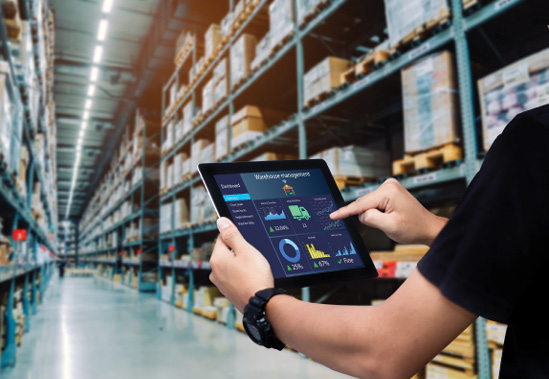As we exit the deepest depths of the COVID-19 pandemic, it’s important for every business to take stock of the new world—its trends, challenges and opportunities. As I reflected on the last year and thought about what piece of the collective puzzle Global Access could provide, three topics came to mind. First, the current state and outlook of the cross-border transportation market. Second, how we see companies succeeding in the face of decreased consumer spending power. Lastly, how companies are launching, succeeding and growing with NFR strategies.
1 / An Evolving Cross-Border eCommerce Transportation Market
The COVID-19 pandemic battered international transportation markets in cross-border eCommerce. Early in 2020, global passenger air travel and flight availability plummeted, reducing global air transportation capacity by over 90 percent. By April 2020, global freight demand had dropped by as much as 25 percent compared to 2019. However, by the end of 2020, global freight demand returned to 2019 levels. At the final mile delivery level, couriers, contractors and postal operators were plagued with rolling lockdowns, facility closures and a lack of staffing.

This confluence of events created mass global disruption and cost increases. Airlines pushed freight or stopped taking bookings in favor of higher yield shipments. Final mile carriers often couldn’t retrieve freight or effectively deliver it because of staffing shortages or lockdowns. Many abandoned their service SLAs altogether. As airlines saw increased demand on reduced capacity, they dramatically increased prices. And as carriers paid more for labor, they passed along those cost increases to customers.
Today, as the world adapts to an endemic COVID, cross-border transportation is in a unique position. Some of the same problems persist. For example, major couriers and warehouse providers still struggle to staff their operations effectively. New challenges such as fuel prices and reduced cargo capacity due to the Russian conflict have also emerged.
However, there are many reasons to be bullish on cross-border transportation performance. Globally, the Global Access Network shows a dramatic reduction in transit times from the peak of the pandemic and remains only very slightly elevated over 2019 performance.
Major couriers are reporting a slight downtick in package volumes, which may help decelerate price increases. Global passenger traffic should return to pre-pandemic levels by 2024 and continue to increase moving forward. Lastly, over the last two years, billions of dollars have been invested in new companies, technologies, and networks to improve efficiency and capacity.
2 / Decreased Consumer Spending Power
Most international consumer’s spending power is being affected, in some unique way, by a stronger U.S. dollar, country-specific inflation or both. As of July 2022, the world’s four most traded currencies, outside of the USD: EUR, JPY, GBP and AUD, have devalued against the USD by between 4-25 percent with an average drop of 14 percent year-over-year. If we look at some other key direct sales markets—Korea, Taiwan, Canada and Malaysia—we’ll find, in some cases less pronounced, but similar recent FX trends.

On the inflation front, only six of the G20 are reporting annualized inflation rates under 6 percent. Outside of the G20, many key direct sales markets are reporting high inflation rates. For example, Colombia, Thailand and Peru are reporting annualized inflation rates of 9.67 percent, 7.66 percent and 8.81 percent respectively. It’s reasonable to say that outside of a few notable exceptions, international consumers are feeling the pain.
In the face of these headwinds, the best performing companies are prioritizing three vital things. First, these companies have a robust pricing strategy. They are monitoring changes to their businesses and making market-specific price adjustments to optimized market performance. Second, many of the most successful companies are diversifying their sales channels while nurturing their current structure. Many are adding revenues from D2C eCommerce channels and new affiliate programs while continuing to support the sales leaders that still drive much of their businesses. Lastly, the most successful companies are focusing on product. They are innovating to ensure that their products stay essential as global consumers are increasingly forced to make purchase tradeoffs.
3 / Stronger Push for NFR
Less than 25 percent of global direct sales revenues are transacted in the United States. Additionally, the top 15 fastest growing direct sales markets, as measured by a 3-year CARG, are international. Simply put, global expansion is the long-term life blood for most direct sales companies. However, the last two years have shown some potential flaws in a traditional, on-the-ground only approach to expansion and growth. As the pandemic wore on, we saw a dramatic increase in companies turning to NFR to add resiliency to supply chains, test new markets or be NFR-first operationally.

At Global Access, we take some companies on the ground (opening local warehouses in country, guiding the product registration process, etc.). For other clients, we support cross-border shipments or NFR. During the pandemic, the most successful companies we worked with had at least some NFR operations. They were able to react more quickly to changes in customer preferences and buying habits, replenish inventories more quickly and cross source product.
The pandemic also pushed many traditional eCommerce brands to expand via an NFR or cross-border model. Cross-border is growing at double the pace of domestic eCommerce and global transportation networks, technologies and governments have rushed to adapt to the acceleration. It has never been easier to transact with, ship to or retain international consumers.
However, from our perspective there are a few important, necessary steps to ensure long-term NFR success. First, companies need to ensure they are compliant with all personal import and compliance laws. Second, the most successful companies provide a frictionless shopping and payment experience. Lastly, effective organizations find ways to maintain the customer-brand relationship to enhance customer LTV.
Tanner Carlson currently serves as the General Manager of Global Access. He is passionate about connecting the world’s business to the world’s consumers. Throughout his career, he has built, implemented, and maintained global software and transportation solutions and expansion strategies that support businesses of all sizes.
From the September 2022 issue of Direct Selling News magazine.


